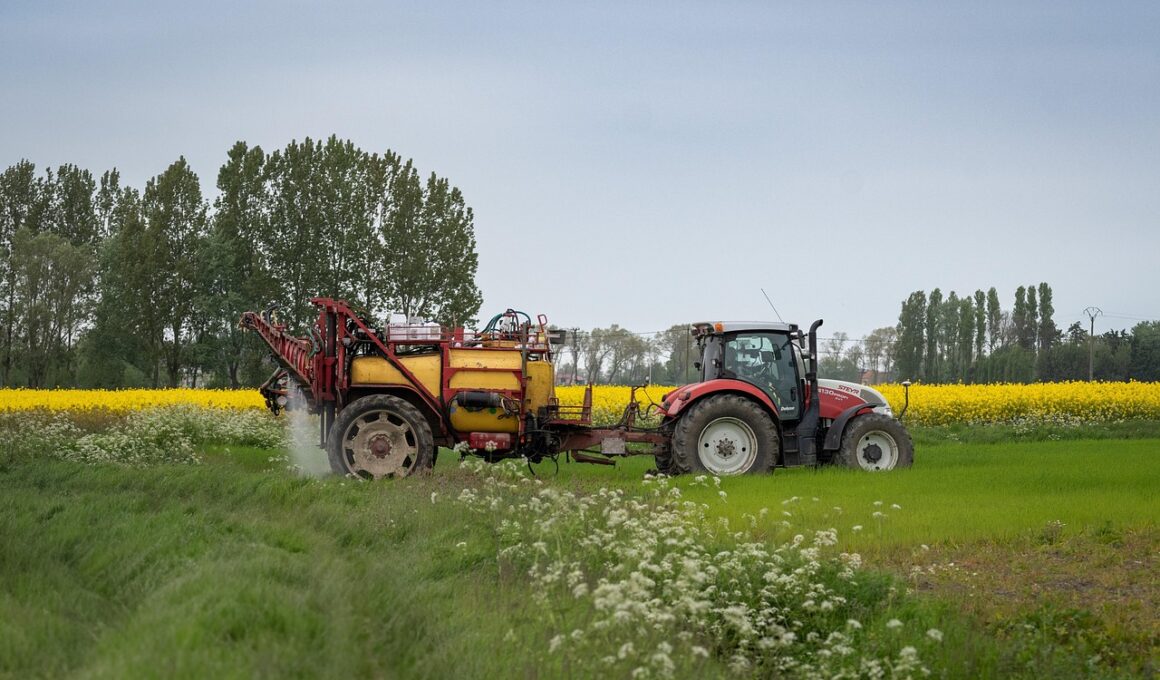Understanding Tax Planning Strategies for Agricultural Businesses
Tax planning is essential for agricultural businesses to maximize profitability and ensure compliance with tax regulations. Utilizing effective tax strategies can significantly influence the financial health of these operations. One prevalent approach involves understanding available deductions and credits specifically designated for agricultural producers. Farmers might be eligible for various deductions, such as expenses tied to equipment, supplies, or operational costs. Additionally, certain credits related to conservation initiatives can help lessen tax burdens. It is crucial to stay informed about these options to better navigate the complexities of tax responsibilities. Furthermore, employing the services of a knowledgeable tax professional can help ensure that agricultural businesses fully leverage the tax benefits available to them. Their expertise can guide operations through specific tax schemes and structures, potentially optimizing tax liabilities. These professionals can also provide tailored advice based on the unique aspects of farming challenges, like fluctuating income and variable expenses. Through careful planning and strategic foresight, agricultural businesses can position themselves to achieve stability and resilience while minimizing tax-related uncertainties.
Another vital strategy is proper record-keeping. Accurate records of all income and expenditures are essential for effectively managing farm taxes. This includes documenting sales from the production and any additional agricultural activities conducted throughout the year. Farmers should maintain detailed logs of operating expenses, including equipment purchases, seeds, or labor costs. Moreover, establishing a systematic approach to recording these details simplifies the overall tax preparation process and improves overall financial management. Utilizing technology, such as accounting software specifically tailored for agricultural operations, can streamline this task and enhance accuracy. Moreover, it is imperative to revisit these records regularly, rather than waiting until tax season. This proactive approach allows for adjustments and better financial forecasting. In addition to traditional expenses, farmers should also be mindful of non-deductible items that could affect taxable income. Understanding what can and cannot be claimed assists in avoiding potential pitfalls and penalties. By making record-keeping a priority, agricultural operators can ease the burden of tax time and ensure they are well-informed, thus supporting sound financial decision-making.
Engaging with Tax Professionals
Engaging with a tax professional versed in agricultural tax laws can be one of the best decisions. Tax regulations are constantly evolving, making it critical to have an expert who understands the nuances affecting farming businesses. These professionals can assess diverse financial situations, teaching farmers how to optimize tax practices based on their unique circumstances. They may assist in calculating the anticipated tax implications of major purchases or sales to ensure fiscal responsibility. Additionally, tax advisers can provide insights into strategic retirement planning, accounting for potential changes in earnings. By doing so, they help to minimize tax pressures during retirement compared to active farming years. Farmers can also benefit from advice on entities like LLCs or corporations, understanding which legal structure may better shield them from taxation. Proper entity selection can reduce liabilities and improve tax efficiency in many cases. It is crucial to engage these professionals well ahead of tax deadlines to allow ample time for strategizing and considering alternatives. Investing in professional tax assistance creates a foundation to achieve financial objectives over the long term.
Utilizing tax credits and deductions effectively represents a substantial aspect of tax planning for agricultural businesses. In many regions, farmers can gain access to tax incentives aligned with sustainable farming practices or conservation efforts, which can potentially reduce tax liabilities significantly each tax season. Understanding what qualifies for state and federal tax breaks enhances potential savings. Depending on the operation, credits may also relate to energy efficiency implementations, funding for renewable energy-driven equipment upgrades, or investments in soil conservation projects. These avenues are often overlooked but can lead to considerable savings when organized correctly. Staying connected with local agricultural institutions or extension services can provide ongoing education regarding these benefits, ensuring that farmers do not miss out on available opportunities. Moreover, tax credits often require specific documentation, making early planning and organized record-keeping essential for successful applications. By leveraging these credits and deductions, agricultural businesses can improve overall operational viability, reinvest savings into their operations, or fund new ventures. This deliberate attentiveness toward tax benefits ultimately translates into enhanced financial sustainability for farmers.
Retirement Planning for Farmers
Retirement planning in the agricultural sector requires tailored strategies that account for the unique financial scenarios faced by farmers. Since farming income can be highly variable, effective planning helps secure the financial future well beyond the years of active farming. Farmers should develop a comprehensive retirement plan integrating different financial resources, including retirement accounts, commercial property investments, or potential farm partnerships. These farmers may look into specialized retirement plans available for agricultural producers, like Simplified Employee Pension (SEP) Plans or 401(k) for self-employed individuals, which can secure a more comfortable living post-retirement. Moreover, proactively saving rather than waiting until near retirement can help mitigate tax liabilities while simultaneously preparing an income stream. A financial expert, particularly one familiar with agricultural dynamics, can assist in navigating these options and customizing strategies to anticipate specific challenges. Understanding potential tax implications of withdrawing retirement funds or selling farm assets in retirement is crucial. These considerations ensure that farmers achieve security and sustainability, helping them enjoy their golden years without financial stress.
Additionally, farmers should consider insurance options as part of their overall tax strategy. Certain insurance policies, whether health or property, can provide tax benefits while protecting against unforeseen challenges. For instance, health insurance premiums may qualify as tax-deductible expenses, which is particularly vital for self-employed farmers not covered under employers’ plans. Similarly, farming businesses could explore specialized insurance products tailored to agricultural operations, which can include livestock or crop insurance. These protective measures lessen the financial blow from natural disasters and mitigate tax burdens efficiently. Evaluating policy options regularly ensures that coverage aligns with changing agricultural dynamics, maintaining protection against potential losses. Furthermore, investing in long-term disability insurance can safeguard farmers’ income should they be unable to work due to illness or injury, representing a critical aspect of their business strategy. Farmers must assess total coverage needs and potential tax impacts associated with these insurance products, maximizing the associated benefits. Ultimately, comprehensive insurance planning can serve as a hedge against risks and create long-term financial stability for agricultural stakeholders.
Continuous Education and Updates
Lastly, continuous education regarding tax regulations, strategies, and changes is fundamental in agricultural tax planning. The ever-shifting landscape of tax laws necessitates that farmers remain vigilant about new tax-related opportunities or revisions. Participating in workshops, joining professional associations, leveraging online resources, or consulting with tax professionals regularly helps keep farmers informed of critical tax strategies and implications. Engaging with local agricultural extension programs or universities can offer valuable insights and updates on recent legislation affecting tax strategies tailored for farming. Additionally, cultivating a strong network within the farming community can promote shared learning experiences where farmers discuss successful practices and strategies that work. The exchange of information among peers enhances overall understanding and implementation of effective tax strategies. Remaining proactive about education empowers farmers to adapt their tax planning efficiently, ensuring that they maximize any available benefits. Continuous learning also promotes better risk comprehension, enabling farmers to anticipate changes that may affect their business’s taxation and finances. In doing so, they can fortify their financial stability and overall operational success in the agricultural sector.
In conclusion, effective tax planning for agricultural businesses involves various strategies tailored to their unique operations. Through proper understanding of tax deductions, credits, record-keeping, and engaging expert professionals, farmers can significantly enhance their financial position. Safe guarding future interests through retirement planning and insurance considerations adds extra layers of security against the uncertainties of farming. Continuous education guarantees that farmers stay informed and adaptable to modify their strategies as needed. By leveraging these aspects strategically, agricultural businesses can foster both financial security and growth while mitigating the inherent risks of their industry. This comprehensive view of tax planning not only alleviates burdens during tax season but also promotes long-term sustainability and independence for farmers striving to thrive in a highly competitive landscape.


